
ACU St. Brigid Health Sciences Building
Tech Tour:/ Peter Coman
The Australian Catholic University has invested in its regional Ballarat campus, inaugurating the new St. Brigid Health Sciences Building earlier this year. The facility will primarily cater for physiotherapy students and includes specialist physiotherapy laboratories, work spaces for students, tutorial rooms, general learning spaces, simulation rooms, a research lab and an observation room. The entire facility represents roughly a $1.25m audiovisual investment. InDesign Technologies (headed up by Peter Coman) was the AV consultant. He takes us on a tech tour of the building:
FLEXIBLE LEARNING SPACES
There are three learning spaces with operable walls, so the space can be broken up and combined in any way that’s desired. The master room is geared for VC, based on a Polycom RealPresence Group 700, with two cameras.There’s dual projection (Panasonic laser projectors and Screen Technics motorised screens), four highly sensitive ClearOne pendant microphones and Shure MX series wireless microphones (handheld and lavalier). All microphones feed into a Biamp Tesira DSP with an expansion module to accommodate all the mic inputs.The ceiling mics have three elements apiece which chew up the inputs. In the lectern rack we’ve also got a Crestron DM8x8 and a Crestron 10-inch TSW1050 as our control touchscreen. ACU has long used Control Gadgets to do their programming and this helps ensure consistency of experience across all the campuses. There’s also an Echo360 lecture capture module in the rack. We’ve had custom cut and engraved stainless steel wallplates made for our cabling. The custom approach makes for a far neater install and we use wall space more efficiently. With the DM8x8 in the rack, the VC is all local to the room. That can then be routed anywhere in the building via the Crestron 64×64 DM HDBaseT matrix in the main comms room. Two pairs of JBL Control loudspeakers and an infrared Williams Sound hearing augmentation system round out the spec.
PRACTICE ROOMS
All the rooms have two systems: an in-room system based on a Crestron DMPS300 (except for the main VC learning space with the 8×8) a 10-inch Crestron touchscreen, a Dell PC, Crestron AirMedia for presentations, a Cisco switch, a single Screen Technics motorised screen and Panasonic laser projector. That then feeds into a centralised system with the Crestron DM64x64 matrix.
The two Practice Rooms are centred around the lecturer’s demonstration plinth. It has two Panasonic cameras trained on it and a ClearOne pendant mic. The video and audio can be recorded to an Echo360 in the comms room — the PC output, Camera 1, 2 or a combination.
There are three Dell PCs shared by the students with the screens on Atdec articulated height-adjustable arms. The 22-inch Samsung touchscreens mean that the student isn’t relying on a keyboard and mouse.
The teacher can push content out to any one of the three student displays, so the students can stay at their own plinths and observe.
We take HDMI out of the Panasonic cameras, then, using an HDBaseT transmitter, the video is sent to the central Crestron matrix. This model of camera has been very reliable for us, our only request is they manufacture it in white as well as black.
The cameras — along with all the Williams Sound hearing augmentation — are centrally powered via a dedicated low-voltage power supply in the comms room. It’s a far superior approach than using individual plug packs. They fail and a technician needs to access the ceiling with a ladder and often interrupt a class.
The Shure MXW microphones have been excellent. They hang around the students’ necks — easy to wrangle. They use a Dante transceiver which go back to two Biamp Tesira servers (one for input, one for output) connected via AVB. It’s a ‘transceiver’ because not only is it receiving a signal it’s also feeding information back, such as whether the pack is docked, battery power status and more. The setup is ideal for applications such as this. Each transceiver accepts four local wireless microphones, but with Dante, only one cable is required between the transceiver and the rack.
WETLAB
It’s a dust-free ‘PC2 compliant’ wet lab, which made the AV design more challenging. We couldn’t have a projector in there. Instead we have an 85-inch LCD that’s built into the wall and concealed by glass, which can only be accessed from a room behind the wet lab. Above the screen is a Williams Sound TX90 infrared transmitter. We used that model because it’s black and blended into the black splashback.
We’ve used mounted Panasonic HE40 cameras. During demonstration, the lecturer can access presets for the cameras. There are in-ceiling speakers throughout.
CONTACT
Indesign Technologies: 1300 468 478 or indesigntechnologies.com.au
LINKS
AV Integrator: InSight Systems
Programmer: Control Gadgets
Architect: Woods Bagot
Builder: H Troon
Project Manager: Gallagher Jeffs


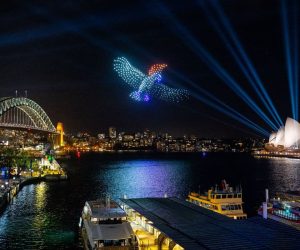
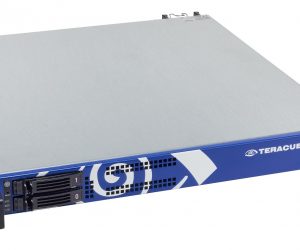




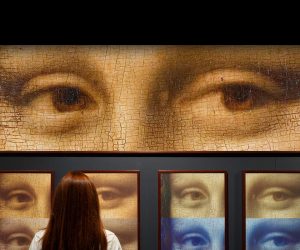

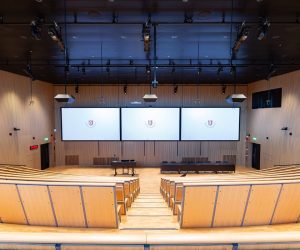
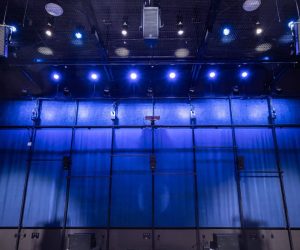
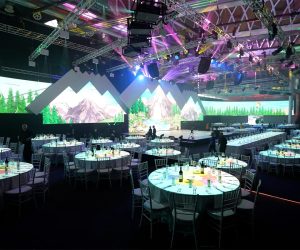


RESPONSES